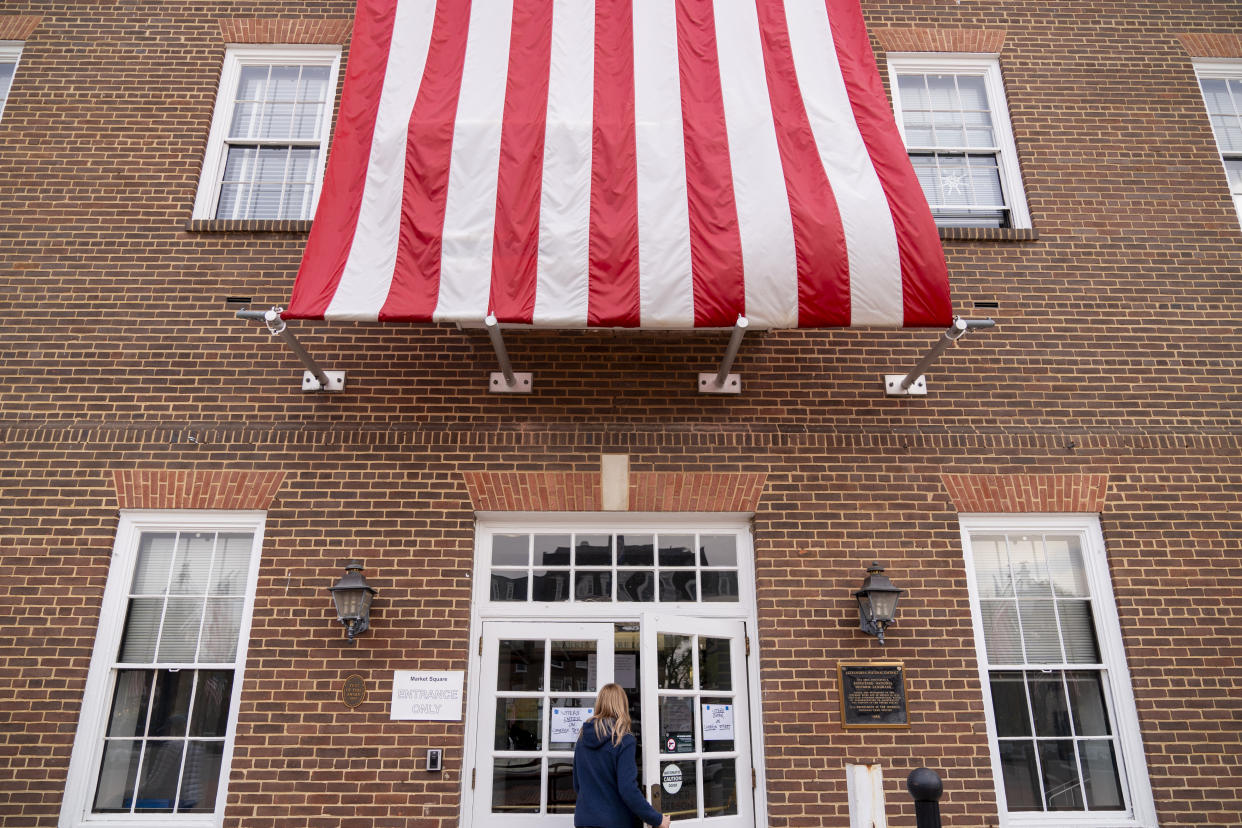Virginia Democrats lost in several key swing districts. So how did they win the General Assembly?

WASHINGTON (AP) — The election results this week in Virginia suggest that Republicans must essentially run the table in competitive areas across the state in order to find overall success at the ballot box. Democrats won full control of the General Assembly despite losing in key swing districts.
Republicans had been able to do that in 2021, along with Republican Glenn Youngkin’s victory over Democrat Terry McAuliffe in the governor's race. In addition to Youngkin’s 2-percentage-point win, Republicans also won the races for lieutenant governor and attorney general that year in very close votes. President Joe Biden, on the other hand, defeated Donald Trump in Virginia in 2020 by more than 10 percentage points.
In this year’s election, Republican candidates prevailed in three of the four Biden-Youngkin state Senate districts and in at least seven of 11 Biden-Youngkin state House districts. The Republican incumbent in an additional Biden-Youngkin state House district in Petersburg is currently leading, but The Associated Press has yet to declare a winner.
Although Democrats won just enough of these Biden-Youngkin districts to cling to a slim 21-19 majority in the state Senate and to claim at least a 51-48 majority in the state House, they also benefited from a new statewide map that gave them a higher number of safer seats than Republicans.
An AP analysis of the 2021 vote showed that Youngkin made just enough inroads with pivotal groups of voters to secure victory. For example, he beat Donald Trump's 2020 performance with suburban voters, college-educated voters and Latinos in competitive areas that went for Biden.
This resulted in several counties and districts concentrated mostly in northern Virginia, the Richmond suburbs, Fredericksburg and Hampton Roads having voted for Biden in 2020 and for Youngkin in 2021.
There were 20 Senate districts and 48 House districts carried by both Biden in 2020 and McAuliffe in 2021. Democrats won all of them Tuesday, averaging 67% of the vote in Senate districts and 76% in House districts. In comparison, there were 16 Senate districts and 41 House districts carried by both Trump and Youngkin. Those seats were all won by Republicans on Tuesday, with an average of 67% of the vote in Senate districts and 73% in the House.
The Democrats’ advantage in safer seats – four in the state Senate and seven in the state House – proved an important factor in a battle for control where every district made a difference.
In 2021, McAuliffe, a former governor, did worse than Biden in every contested Senate and House district in the commonwealth under the new boundaries. But this year, Democratic candidates outperformed McAuliffe in almost all districts and approached or in a few cases surpassed Biden’s 2020 totals.
Republican candidates, on the other hand, outperformed Trump in almost every Senate and House district this year, but trailed Youngkin in 75% of Senate and House districts.
In 2021, the Supreme Court of Virginia approved new district maps created by two court-appointed experts – one Republican and one Democrat – after a bipartisan redistricting commission was unable to agree on a new plan. Unlike district maps drawn by state legislatures, the new plan did not prioritize protecting incumbents, as evidenced by the high number of retirements and incumbents defeated in the primary earlier this year.
Incumbents fared somewhat better on Tuesday than they did in the primary, when six lost. Two state senators lost their seats on Tuesday: Republican Siobhan Dunnavant in District 16 near Richmond and Democrat Monty Mason of Williamsburg. Two sitting state delegates were defeated, Republican-turned-independent Matt Fariss in District 51 and Republican Karen Greenhalgh in District 97. In District 82, state Del. Kim Taylor currently leads her Democratic opponent, but the AP has not called the race.
